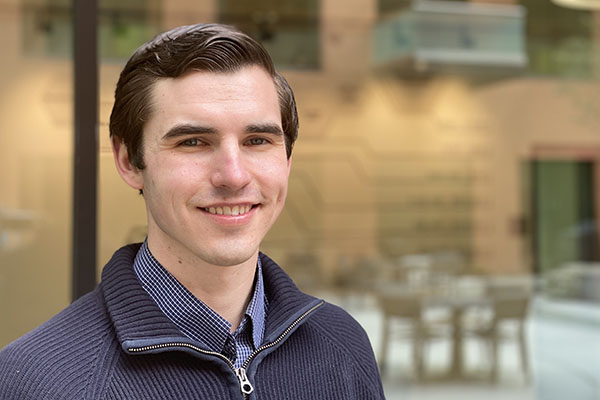Logan Coordinator Gains Certification

Place caption here
This summer, Utah Assistive Technology Program Logan Coordinator Dan O’Crowley achieved Assistive Technology Professional certification.
It adds a stamp of professionalism to work already being done at UATP in Logan. For example, ATP-certified professionals are qualified to do wheelchair evaluations for insurance. While UATP does not bill insurance and offers help to clients regardless of whether they are insured, O’Crowley does have that level of expertise. The certification is through the Rehabilitation Engineering and Assistive Technology Society of North America (RESNA).
The certification also verifies that O’Crowley is versed in ways to help clients with a wide range of disabilities, and find the assistive technology that is right for them.
“One of the key foundational building blocks, the ethics of the certification, is to follow a set of principles and guidelines that will avoid AT abandonment,” he said. That’s what happens when a client receives a dandy new piece of equipment and quickly stops using it. Usually when that happens, it is because the device was inappropriate and/or the client was not properly involved in its selection. “A lot of times there’s not just abandonment of a particular piece of equipment, but also of believing there’s a device out there that can help you,” he said.
It is also important to make sure the client has received support from other professionals. “Ideally the process that someone with a disability would follow is they would work with a physical therapist to try to increase range of motion, dexterity, agility, balance, etc.,” O’Crowley said. “They would work next with an occupational therapist to learn how to use what function and abilities they have to accomplish the tasks that they need to each day, using their environment and their own abilities.”
After that, it’s time to look at devices. “If someone’s disability is not going to change, you’re going to be looking for more AT solutions because likely you’ve already tried accomplishing these activities using the abilities you have.”
That’s where an AT professional comes in, working to bridge gaps between goals and abilities, between the expensive and the affordable, between an off-the-shelf device and the tweaks and modifications needed to make it actually work. It pulls together a rare blend of people skills, the understanding of health needs, and the ability to saw, drill, weld or 3D print a solution.
Often in the AT world, the high-tech gadgets get the most attention. But sometimes it’s the small, inexpensive things that make all the difference. For example, a precisely-fitted, 3-D printed “washer” that fits inside a pill bottle allows some clients with tremors to take medications on their own without spilling the pills.Also foremost on an AT professional’s mind is safety. “We are very careful in our designs to over-engineer, rather than under-engineer, for safety,” O’Crowley said. Another strictly-followed rule: if you don’t have the expertise, pass the client on to someone who does. “There are many resources in Utah that I can refer them to,” he said.
Do you have an assistive technology need? UATP has facilities in Logan, the Uintah Basin, and Salt Lake City. Our financing options for AT are available to Utahns statewide.

